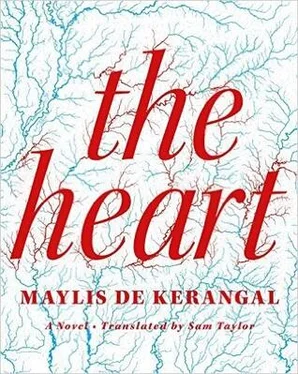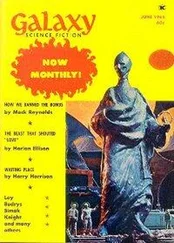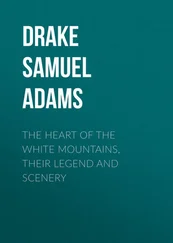Maylis de Kerangal - The Heart
Здесь есть возможность читать онлайн «Maylis de Kerangal - The Heart» весь текст электронной книги совершенно бесплатно (целиком полную версию без сокращений). В некоторых случаях можно слушать аудио, скачать через торрент в формате fb2 и присутствует краткое содержание. Год выпуска: 2016, ISBN: 2016, Издательство: Farrar, Straus and Giroux, Жанр: Современная проза, на английском языке. Описание произведения, (предисловие) а так же отзывы посетителей доступны на портале библиотеки ЛибКат.
- Название:The Heart
- Автор:
- Издательство:Farrar, Straus and Giroux
- Жанр:
- Год:2016
- ISBN:9780374713287
- Рейтинг книги:5 / 5. Голосов: 1
-
Избранное:Добавить в избранное
- Отзывы:
-
Ваша оценка:
- 100
- 1
- 2
- 3
- 4
- 5
The Heart: краткое содержание, описание и аннотация
Предлагаем к чтению аннотацию, описание, краткое содержание или предисловие (зависит от того, что написал сам автор книги «The Heart»). Если вы не нашли необходимую информацию о книге — напишите в комментариях, мы постараемся отыскать её.
The Heart
The Heart
The Heart — читать онлайн бесплатно полную книгу (весь текст) целиком
Ниже представлен текст книги, разбитый по страницам. Система сохранения места последней прочитанной страницы, позволяет с удобством читать онлайн бесплатно книгу «The Heart», без необходимости каждый раз заново искать на чём Вы остановились. Поставьте закладку, и сможете в любой момент перейти на страницу, на которой закончили чтение.
Интервал:
Закладка:
5
We’ve got someone for you. A call at 10:12 a.m. Neutral, informative, staccato. A man, six feet, 150 pounds, about twenty years old, automobile accident, traumatic brain injury, in a coma — we know who this is, of course: his name is Simon Limbres. The call is barely over before the emergency medical team arrives at the ICU. The fire doors open and the stretcher is rolled through the department’s main corridor, people moving out of its way. Révol appears. He has just examined the patient admitted in the night after convulsions and he is pessimistic: the woman was not given CPR in time; a scan revealed that liver cells died after the heart stopped beating, a sign that the brain cells were affected too. Now, after being alerted, he sees the gurney at the end of the corridor and thinks: This is going to be a long day.
The emergency team’s doctor follows the stretcher. Bald, in his mid-fifties, he has the physique of a mountain climber: zero body fat, hard as stone. He exposes pointed teeth when he shouts out: Glasgow 3! Then, to Révol: The neurological examination showed no spontaneous reaction to auditory, visual, or tactile stimulation; there is also ocular damage (asymmetrical eye movement) and respiratory autonomic dysfunction; we’ve intubated him. He closes his eyes and smooths his skull, from the forehead to the occiput: suspected cerebral hemorrhage after a TBI, nonreactive coma, Glasgow 3—he uses this shared language, this language that banishes prolixity as time-wasting, forbids any notions of eloquence or seductiveness in articulation, abuses nouns, codes, and acronyms, this language where to talk is to describe or provide information about a body, to lay down the parameters of a situation in order that a diagnosis can be made, tests ordered, that the patient can be treated, saved: the power of concision. Révol absorbs each piece of information, then orders a body scan.
* * *
It’s Cordélia Owl who takes charge of the young man, supervising the transfer to his room, to his bed. After that, the emergency team leaves the department, taking its equipment — stretcher, mobile respirator, oxygen tank. Now she has to fit an arterial catheter, electrodes on the thorax, a urinary catheter, and to start up the monitor that displays Simon’s vital signs — lines of various colors and shapes appear on the screen, superimposed, straight lines or broken lines, hatched derivations, rhythmic undulations: medical Morse. Cordélia works with Révol: her actions are assured, her movements fluid, relaxed, as if the viscous ennui that clogged her every gesture only yesterday has been purged from her body.
* * *
One hour later, death clears its throat, knocks politely on the door, a moving stain, irregularly shaped, opacifying a clearer, larger shape: yes, there it is, that’s death. An abrupt vision, like a hard slap in the face, but Révol does not blink, concentrating on the body-scan pictures that appear on his computer screen: labyrinthine images, each with a key, like a map, that he has to rotate in every direction, zoom into, on which he must make reference points and measure distances, while close by on his desk lies a hospital-branded cardboard folder containing a paper printout of “relevant” images provided by the Radiology Department that scanned Simon Limbres’s brain. To produce these representations, the boy’s head was scanned by X-rays, and then, using a tomographic analysis, the data was divided into “slices,” each thinner than a sheet of paper, which could be analyzed in every spatial plane: coronal, axial, sagittal, and oblique. Révol can read these images, what they say about the patient’s state and what they augur for his future; he recognizes those shapes, those marks and haloes, interprets those milky rings, deciphers those black spots, those legends and codes; he compares, checks, recommences, continues his investigation until the inevitable conclusion: Simon Limbres’s brain is dying; it is drowning in blood.
Diffuse lesions, early cerebral swelling, and there is nothing they can do to control intracranial pressure, already way too high. Révol leans back in his chair. His gaze lingers on the disorder of his desk while he thumbs his jaw; he surveys the scrawled notes, the administrative newsletters, the photocopy of an article sent by the Ethics Unit of the Paris Hospital Administration on tests carried out in the moment of heart failure; his eyes glide over the various small objects that cover the desk, including that tortoise carved in jade, a gift from a young female patient who was suffering with severe asthma, then suddenly halt at the streaming purplish slopes of Mont Aigoual. In all likelihood, Révol is remembering, in a flash, that September day when he first used peyote in his house in Valleraugue. Marcel and Sally had arrived in late afternoon in an emerald sedan, its wheel rims caked with dry mud. The vehicle had come to a juddering stop outside his house and Sally had waved through the open window Hello! Hey! It’s us! her snow-white hair flying, revealing her wooden earrings — a pair of lacquered scarlet cherries. Later, after they’d eaten, as night was falling over the limestone plateau, a rain of bright stars, they had gone out into the garden and Marcel had unwrapped a parcel containing a few little grayish-green cactuses, round and thornless, which the three friends rolled around in their palms before inhaling the bitter smell. These plants had come a long way: Sally and Marcel had gone to a mining desert in northern Mexico to find them, had smuggled them illegally out of the country, and had carefully brought them here, to the Cévennes. Now Pierre, who studied hallucinogenic plants, was impatient to try them: the combination of powerful alkaloids contained in peyote, a third of which were mescaline, provoked visions that seemed to come from nowhere, unrelated to memories, visions that played a major role in the ritual use of this cactus, which the indigenous Americans most often consumed during shamanic ceremonies. But, even more than this, what interested Pierre was the synesthesia that manifested during these hallucinations: psychosensory vividness was supposed to increase in the first phase of ingestion, so he hoped to be able to see tastes, to see odors and sounds, tactile sensations, and he hoped that this translation of the other senses as images would help him to understand, even to solve, the mystery of pain. Révol thinks of that brilliant night, when the celestial vault had split open above the mountains, releasing unsuspected places they had tried to dive into, lying in the grass, faces to the sky, and suddenly the idea crosses his mind of a constantly expanding universe, a place where cellular death will be the operator of metamorphoses, where death will shape the living like silence shapes noise, or darkness light, or the static the mobile — a fleeting intuition that persists on his retina even as his eyes refocus on the computer screen, that sixteen-inch rectangle irradiated with black light where the cessation of all mental activity in Simon Limbres’s brain is announced. Unable to connect the young man’s face with death, he feels his throat tighten. And yet he’s been working in this area for nearly thirty years. Thirty years.
* * *
Pierre Révol was born in 1959. The Cold War, the Cuban Revolution, Swiss women voting for the first time in the canton of Vaud, the shooting of Godard’s Breathless , the publication of Burroughs’s Naked Lunch and the release of Miles Davis’s mythical opus Kind of Blue —just the greatest jazz album of all time, according to Révol, who likes to glorify his own vintage. Anything else? Oh yes — he puts on a casual air in order to increase the power of the revelation: you can imagine him looking away as he speaks to you, turning his attention to something else altogether, perhaps rummaging in his pocket or dialing a phone number or reading a text — yes, it’s the year when death was redefined. And in that moment, he is not displeased by the mixture of stupor and dread that he sees on the faces of the people around him. Then, lifting his head and smiling vaguely, he adds: Which is not exactly insignificant when you happen to work in Intensive Care.
Читать дальшеИнтервал:
Закладка:
Похожие книги на «The Heart»
Представляем Вашему вниманию похожие книги на «The Heart» списком для выбора. Мы отобрали схожую по названию и смыслу литературу в надежде предоставить читателям больше вариантов отыскать новые, интересные, ещё непрочитанные произведения.
Обсуждение, отзывы о книге «The Heart» и просто собственные мнения читателей. Оставьте ваши комментарии, напишите, что Вы думаете о произведении, его смысле или главных героях. Укажите что конкретно понравилось, а что нет, и почему Вы так считаете.












